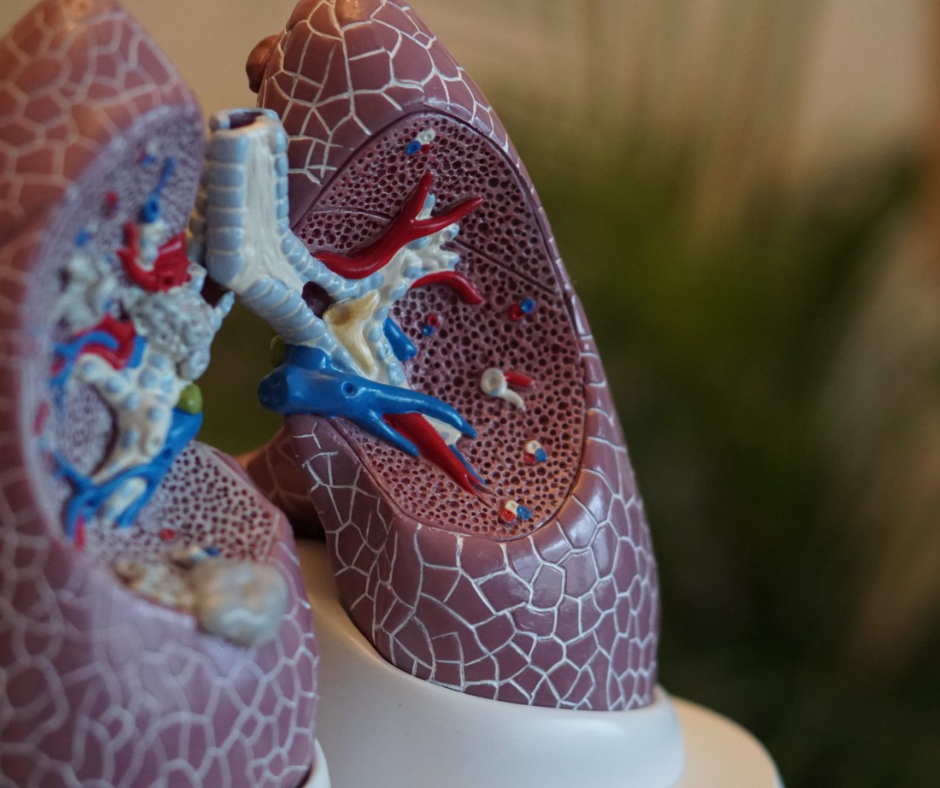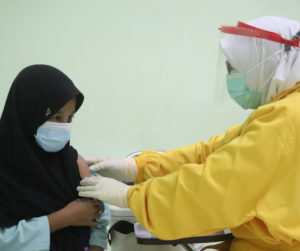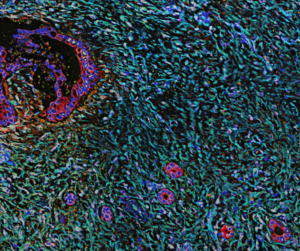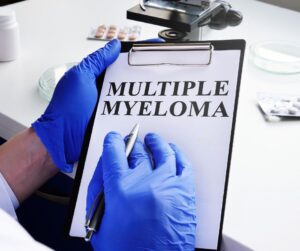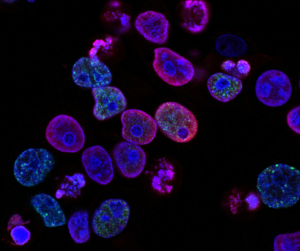Megan B. May, PharmD, BCOP, and Tori A. Gray, PharmD Candidate 2022
Non-small cell lung cancer (NSCLC) is the third most common type of cancer in the Unites States (US). It is known to harbor many types of mutations, making it particularly difficult to define the best treatment algorithm for a patient, especially after first line treatment. Over the last few decades, significant progress has been made in regards to mortality reduction for NSCLC due to the development of mutation-specific targeted therapies. Kirsten Rate Sarcoma virus gene (KRAS) mutations, specifically the G12C mutation, present in approximately 13% of patients with NSCLC, have demonstrated to be problematic in regards to treatment selection due to their ability to develop resistance to treatment. Sotorasib is the first KRAS inhibitor approved by the US Food and Drug Administration (FDA) for patients with NSCLC who have the KRAS G12C mutation and have progressed on prior treatments. Due to the ability of sotorasib to covalently bind to a pocket of the switch 2 region present in the inactive GDP-bound confirmation, it traps KRASG12C in the inactive state and inhibits KRAS oncogenic signaling. CodeBreaK100 was a single-arm, open-label, phase 2 study evaluating the safety and efficacy of sotorasib in patients with KRAS G12C mutated NSCLC and results in its FDA approval.
What patient population was eligible for inclusion in the CodeBreaK100 trial?
Eligible patients were those with locally advanced or metastatic KRAS G12C mutated NSCLC, who had disease progression after receipt of anti-programmed death 1 (PD-1) or anti-programmed death-ligand 1 (PD-L1) immunotherapy, or disease progression after receipt of platinum-based combination chemotherapy, or disease progression after receipt of both immunotherapy and platinum-based combination chemotherapy, aged 18 years or older, an Eastern Cooperative Oncology Group (ECOG) score of 0 to 1, and had measurable disease according to the RECIST criteria. Patients were given sotorasib 960 mg orally once daily until disease progress or unacceptable toxicity occurred.
What were the key endpoints and assessments of the CodeBreaK100 trial?
The primary endpoint was objective response (complete or partial response) as assessed by blinded, independent, central radiologic review. Tumor response was assessed by independent central review according to RECIST, version 1.1, with use of contrast-enhanced computed tomography or magnetic resonance imaging.
Secondary endpoints included duration of response, disease control (defined as complete response, partial response, or stable disease according to RECIST, version 1.1; minimum time interval for the determination of stable disease, 5 weeks), time to response, progression-free survival, overall survival, and safety. Adverse events were graded with use of Common Terminology Criteria for Adverse Events, version 5.0. Response-related endpoints were evaluated in patients who had received at least 1 dose of sotorasib and had at least 1 measurable lesion at baseline as assessed by independent central review according to RECIST, version 1.1.
What were the efficacy results of the CodeBreaK100 trial?
A response rate was evaluated in 124 patients. An objective response occurred in 46 patients (37.1%) with 4 (3.2%) having a complete response and 42 (33.9%) having a partial response. The median duration of response was 11.1 months. Disease control occurred in 100 patients. The median progression-free survival was 6.8 months and median overall survival was 12.5 months. Treatment-related adverse events occurred in 88 patients (69.8%), including grade 3 events in 25 patients (19.8%) and grade 4 events in 1 patient (0.8%).
What were the safety results of the CodeBreaK100 trial?
Treatment-related adverse events included diarrhea, increase in alanine aminotransferase and aspartate aminotransferase level, and fatigue. Adverse events led to a dose modification (dose interruption, reduction, or both) in 28 (22.2%) patients and discontinuation of therapy in 9 (7.1%) patients. Of the events that led to dose modification, diarrhea, increase in aspartate aminotransferase, alanine aminotransferase and blood alkaline phosphatase, and nausea were the most common.
What dosage of sotorasib is recommended for use?
The FDA-approved dose for sotorasib is 960 mg (eight 120 mg tablets) orally once daily with or without food.
Based upon efficacy and safety data of sotorasib, what is the FDA-approved indication for use?
Sotorasib is indicated for the treatment of adult patients with KRAS G12C-mutated locally advanced or metastatic NSCLC who have received at least 1 prior systemic therapy.
What is the FDA-approved test associated with G12C mutation?
The FDA approved 2 tests that can evaluate G12C mutation in the tumor tissue or blood, Qiagen therascreen KRAS RGQ PCR kit and Guarant 360CDX, respectively.
References:
- Skoulidis F, Li BT, Dy GK, et al. Sotorasib for lung cancers with KRAS p.G12C mutation. N Engl J Med. 2021; 384:2371-81.
- Molina-Arcas M, Samani A. Downward, J. Drugging the undruggable: advances on RAS targeting in cancer. Genes. 2021; 12:899.
- Roman M, Baraibar I, Lopez I, et al. KRAS oncogene in non-small cell lung cancer: clinical perspectives on the treatment of an old target. Molecular Cancer. 2018; 17(33):1-14.
- National Cancer Institute. Cancer stat facts: lung and bronchus cancer. Available at: https://seer.cancer.gov/statfacts/html/lungb.html. Accessed on August 27, 2021.
- Non-Small Cell Lung Cancer. NCCN Clinical Practice Guidelines in Oncology. Version 5.2021.
- LUMAKRAS (sotorasib) [package insert]. Thousand Oaks, CA; Amgen Oncology: 2021.

Tori A. Gray, PharmD Candidate 2022

Megan B. May, PharmD, BCOP

